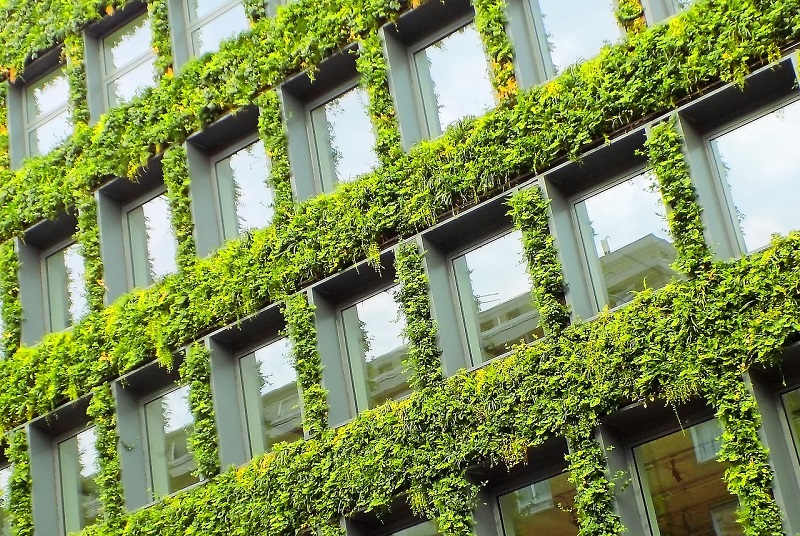We’re at a time of crisis; how do we rebuild our economies after COVID-19? Humans have caused the annihilation of 83% of all wild animals and half of all plants. We’re disrupting a natural climatic balance, pushing us into a future projected to be 39.38-40.64 °F warmer.
We need to take drastic action to re-balance society with nature.
Cities account for 75% of resource use, 60-80% of global greenhouse gas emissions, and 50% of global waste. By 2030, the urban population is expected to grow by 70% worldwide. This makes cities a perfect hub to transition into a sustainable future.

And this transition has started now. Worldwide investments are shifting from conventional to green alternative design, within which urban greening is key.
In this article, we’ll look at two examples of urban greening projects, identifying the importance of businesses and individuals for the success of each.
What is urban greening and why is it important?
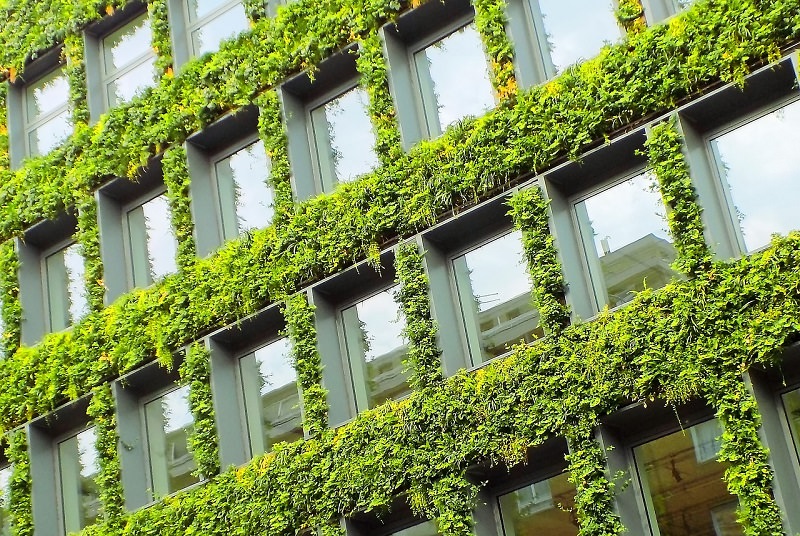
Living green walls are an urban greening initiative. Image courtesy of Belinda Cave from Pixabay
Urban greening is the incorporation of vegetation into a city’s design and landscape. The aim is to create a mutually beneficial relationship between city dwellers and their environment.
Examples of urban greening initiatives include living plant walls, roof-top gardens, green spaces, tree planting, and urban forests.
Such initiatives make our cities more sustainable by providing carbon sequestration, creating habitat, and building climate change resilience.
Urban greening in Vancouver, British Columbia, Canada
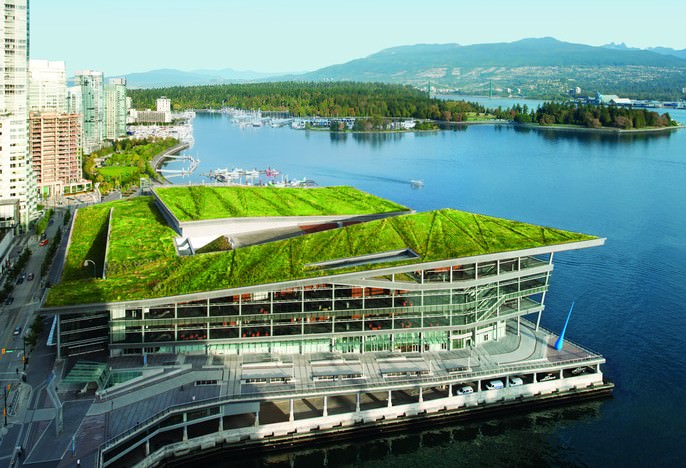
The Vancouver Convention Centre has a 6-acre green roof housing 400,000 indigenous plant species. Image courtesy of Vancouver Convention Centre
Vancouver is rated the third-greenest city in the world, it has seen a 35% increase in green jobs since 2010, and is home to 23% of Canada’s CleanTech companies.
This success relies on the inclusion of a broad range of stakeholders, including business owners and the local community. The city engaged 35,000 residents and 180 organizations in writing an urban greening and sustainable city action plan.
This plan uses a systemic approach. That is, through inclusion, collaboration, and engagement, businesses adjust to operate more sustainably, to meet the urban greening plan they were involved in writing. In addition, via the same inclusion, collaboration, and engagement, Vancouver’s Green City Action Plan inspires the public to become active citizens as they are given a voice and the power to make a difference.
You can act: key takeaways from Vancouver
- Community collaboration is vital to support urban greening efforts and green businesses. Choose local projects you feel motivated by and get involved.
- Land and property owners take responsibility for greening their properties. Collaborate with local authorities and invest in green solutions for your property and workspace.
- Share actions and build alliances with your neighbors and community.
Urban greening for Columbia, Missouri, U.S.
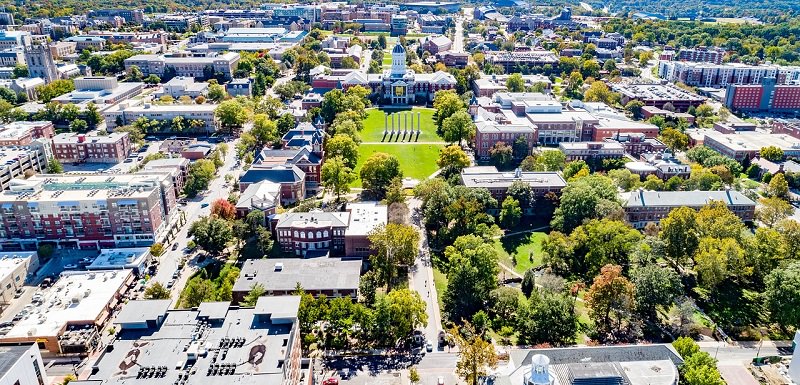
Columbia Missouri values businesses that have a sustainable business model. Image: University of Missouri Campus in Columbia, courtesy of Mike Gattorna from Pixabay
Columbia’s Green Business Program incentivizes businesses — via grants — to involve sustainable and urban greening initiatives. The city values businesses that make a strong environmental stance.
Traditionally, the sole aim of business was to maximize profit. By making businesses accountable to the environment as well as shareholders, Columbia is, in essence, changing the way business is valued, encouraging greener corporations.
During Gothenburg’s Green Week conference in October 2020, speakers from Gothenburg’s European Office stated that urban greening will attract and reward companies with strong green aspirations, entrepreneurs, and innovative thinkers. Lean tech startups, digital solutions, and green technologies will replace non-sustainable services and products, transitioning society into a new age of sustainable and green cities.
You can act: key takeaways from Columbia
- We need to move away from looking at business as a means to make money solely. To value and support organizations with a strong green and sustainable stance.
- Consume less and support a circular economy. Purchase second-hand or items made of recycled materials to support organizations that provide these more sustainable alternatives.
- Be innovators and entrepreneurs. Identify a consumer need that hasn’t been met that will support the transition into a greener future. Network to gather a team with the skills needed to make your business idea a reality. This could be an application, website, or local service. If you’re unsure how to get started, learn by speaking to others, attend educational events, and research to find investors and the support you need to get your idea up and running.
Let’s make our cities greener
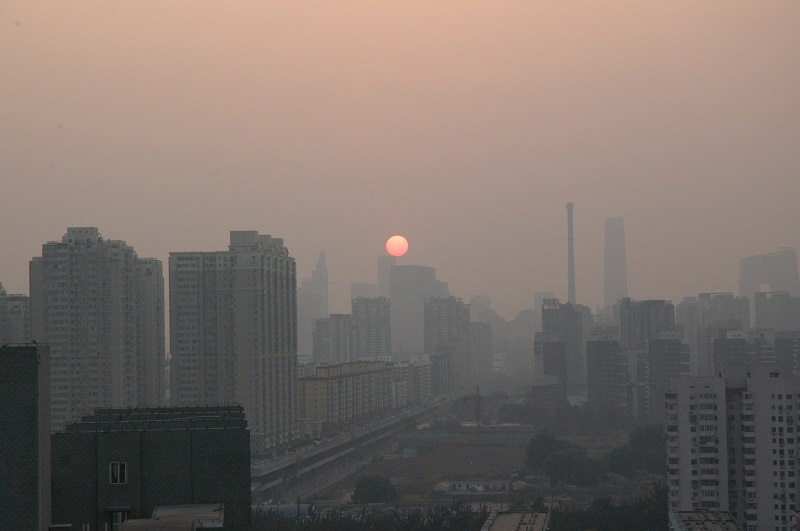
The sun is setting on the conventional, unsustainable urban model. Image source
We alone can imagine a future that completes human development, drawing from wisdom, not consumption.
We have a chance to make amends, to work with nature, and restore the rich and wonderful world we inherited. Just imagine, green cities lined with trees and a bird chorus.
Go on, I dare you.
Feature image: Belgian architect Vincent Callebaut’s vision of “2050 Paris Smart City.” Source
 |
About the AuthorJane Courtnell is a content writer at Process Street. She graduated in biology, specializing in environmental science at Imperial College London. During her degree, she developed an enthusiasm for writing to communicate environmental issues. She continued her studies at Imperial College’s Business School and started looking at sustainability from a business perspective. When she is not writing, she enjoys being in the mountains, running, and rock climbing. Follow her at @JaneCourtnell. |
The post Urban Greening Post COVID-19: What It Means for Business appeared first on Earth 911.

